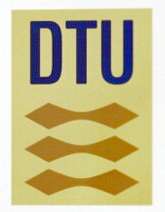Nature inspires a greener way to make colorful plastics

Long before humans figured out how to create colors, nature had already perfected the process—think stunning, bright butterfly wings of many different hues, for example. Now scientists are tapping into those secrets to develop a more environmentally friendly way to make colored plastics. Their paper on using structure—or the shapes and architectures of materials—rather than dyes, to produce color appears in the ACS journal Nano Letters.
N. Asger Mortensen, Anders Kristensen and colleagues point out that currently, plastic manufacturers add pigments to their products. That gives them the range of colors customers have come to expect in everything from toys to tools. But these additional ingredients add to the growing waste stream of plastics manufacturing and make it difficult to recycle products. To come up with a more eco-friendly alternative, Mortensen's team turned to highly advanced materials that can be made to appear in different colors—purely by designing their surface structures at the nanoscopic level.
They layered materials, including ultrathin, nano-sized aluminum disks, in a way that manipulates light and creates a new kind of colored surface. To protect it from damage, the scientists topped it off with a scratch-resistant film. Using this method, they created a wide spectrum of colors that could be added to plastics.
More information: Nano Lett., Article ASAP: DOI: 10.1021/nl5014986
Journal information: Nano Letters
Provided by American Chemical Society





















